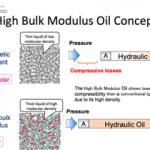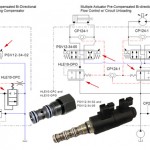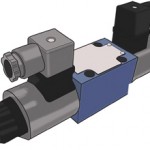Echoing its local-for-local growth, Bosch Rexroth is once again expanding its GoTo Focused Delivery Program, as it is able to add more products and shorten lead times due to more local manufacturing. Originally launched in the United States in 2009, this marks five years the company has been of providing fast deliveries of Rexroth’s most popular drive […]
Conserving energy and reducing leakage with hydraulic fluids
Leakage and system efficiency are always at the top of fluid power users’ minds. This is why several CCEFP researchers are focusing on how to optimize system sealing and fluids at the Center’s second annual Fluid Power Innovation & Research Conference 14 at the Marriott at Vanderbilt University in Nashville. Kicking off a track on […]
The smart use of logic elements
By Darren Magner • Director of Marketing & Product Development • Comatrol Effective use of logic elements is key to designing cost-effective circuits, and is limited only by the imagination of the designer. Logic elements, often called differential sensing valves, are pressure control devices. Like directional control valves, a spring bias holds the spool in […]
Cedar Point’s Top Thrill Dragster relies on the power density of hydraulics
As it embarked on yet another one of its record-breaking, thrill-seeking rides, Cedar Point quickly turned to hydraulics, for the power density and precision control it offers. In our fifth and final installment of Design World’s Summer Tech Vacation video series, Editorial Director Paul Heney spoke with Monty Jasper, Corporate Vice President for Safety & […]
Customized operator control interface designs
GS Global Resources provides enhanced operator and control environments, customized to its customers’ requirements. Operator control interface designs are seat mounted or designed for dash integration. CAN, LIN, RS485 interface options, numerous switch configurations using today’s software technology. Systems can include a variety of styles and sizes of display control modules, such as touch screens and […]
What are hydraulic valves?
Hydraulic valves, in addition to the force density advantage of actuators, are what help make hydraulics unique in its control of force, torque and motion. Valves govern direction, pressure and flow of hydraulic fluid, enabling smooth, safe and controlled use of actuators. Every machine both requires and uses valves, varying vastly in execution from a […]
Tobul Accumulator acquired by Freudenberg Sealing Technologies
Freudenberg Sealing Technologies, sealing division of Freudenberg Group, Weinheim, Germany, has acquired Tobul Accumulator Inc., as of July 31. Tobul develops and manufactures piston and bladder hydraulic accumulators. The family-owned company has sites in Bamberg, S.C. and Houston, Texas, and employs some 120 people. “With the acquisition of Tobul, we strengthen our established accumulator business and continue to develop […]
The real cost of filtration
Unplanned maintenance, downtime or a need to unexpectedly change a hydraulic filter element is not an option in any underground mining operation. Today, proper hydraulic maintenance has become even more critical because the mining industry is facing the toughest operating environment in its history. Managing both cost and improving system performance are key factors dictating […]
Modular transducer allows measurements up to 130 ft
Position sensing in mobile applications can be tricky, especially on large machines with long boom cylinders. Such machines often rely on cable reels and string pots, but these devices are not always reliable. They can stretch, thus require recalibration. And the elements—winds causing erratic readings and dither in the hydraulics, ice buildup preventing the wire […]
Rexroth expands its GoTo program to all of North America
Bosch Rexroth has expanded its GoTo Focused Delivery Program, with it now being available in the U.S., Canada and Mexico. In addition, the company has added more than 250 new hydraulics components into the program. Earlier this month, Bosch Rexroth highlighted its continued growth in its “local-for-local” manufacturing plans, with the expansion of its Bethlehem, […]











